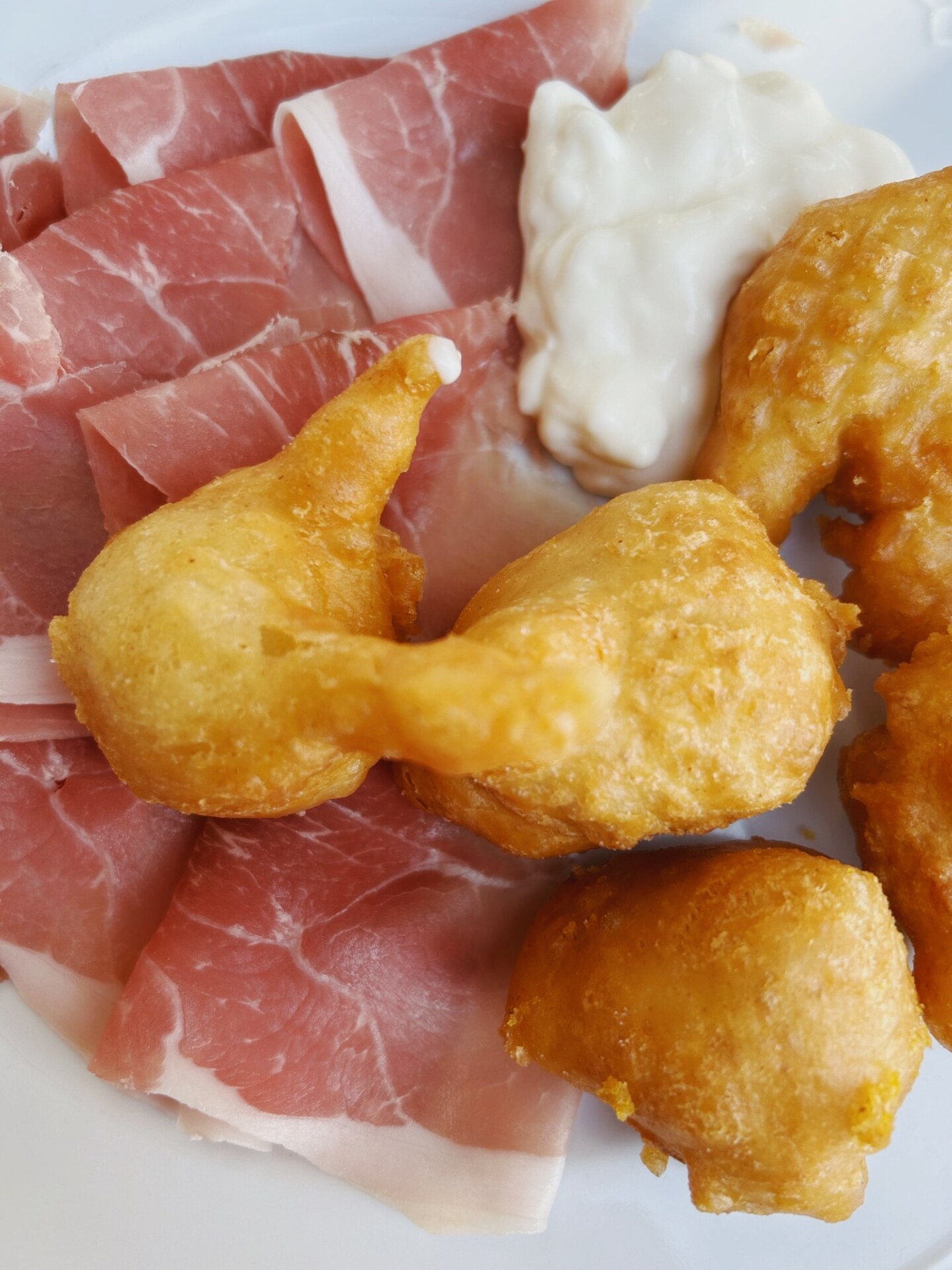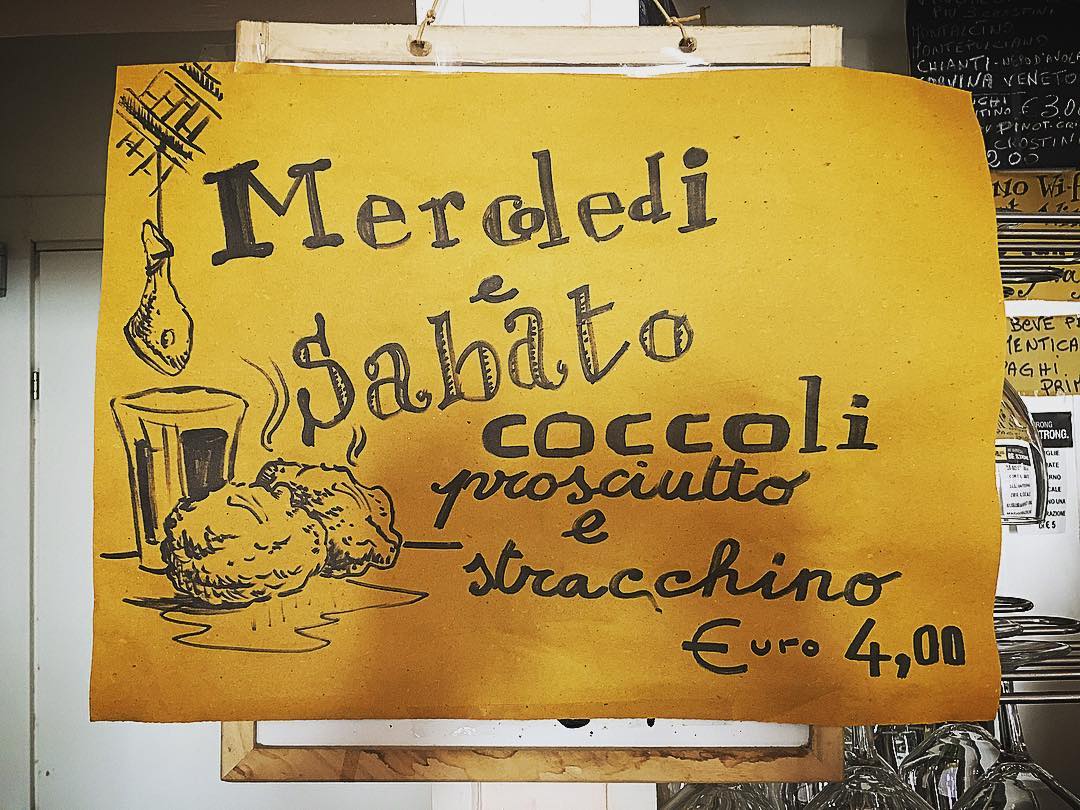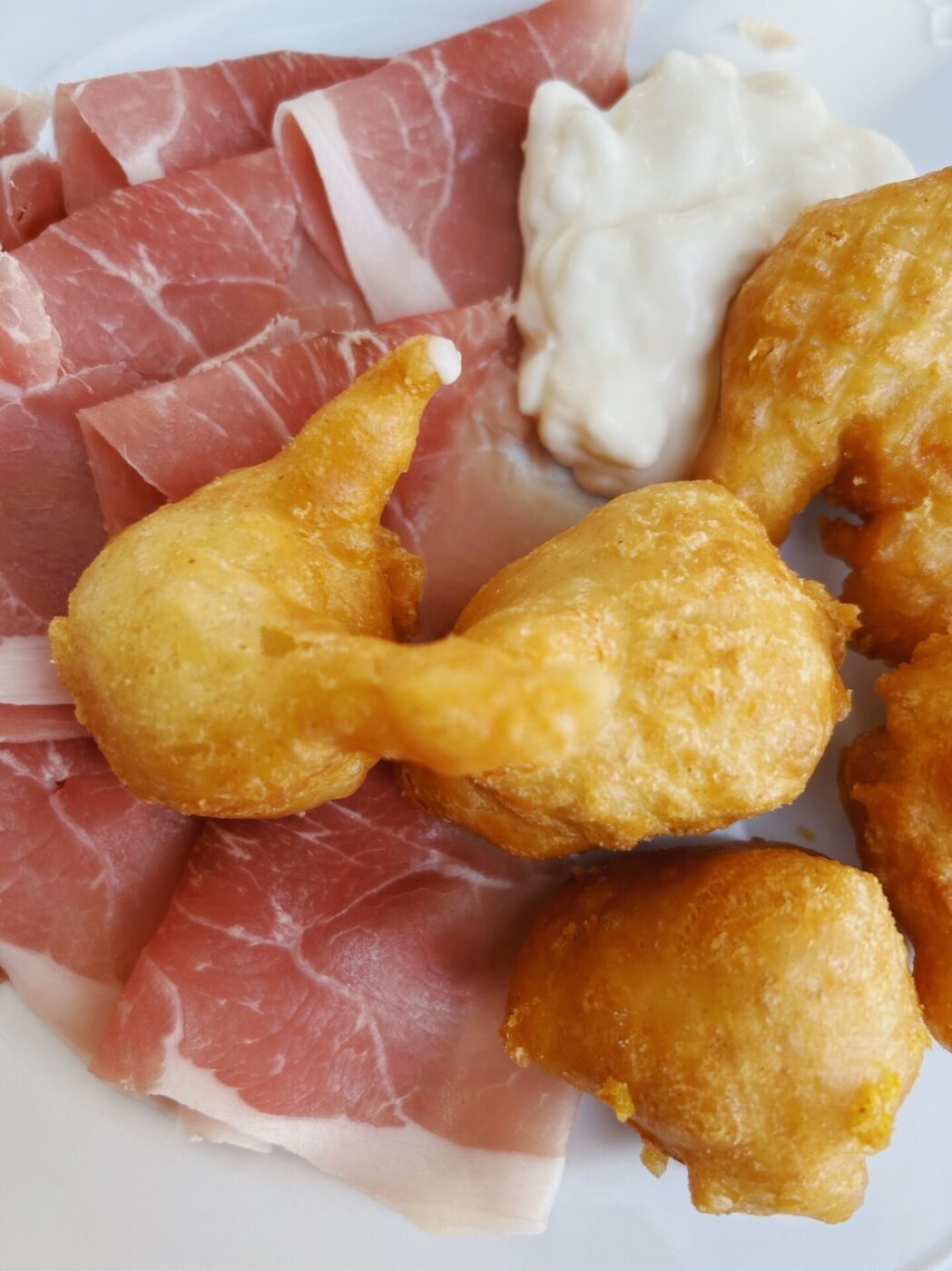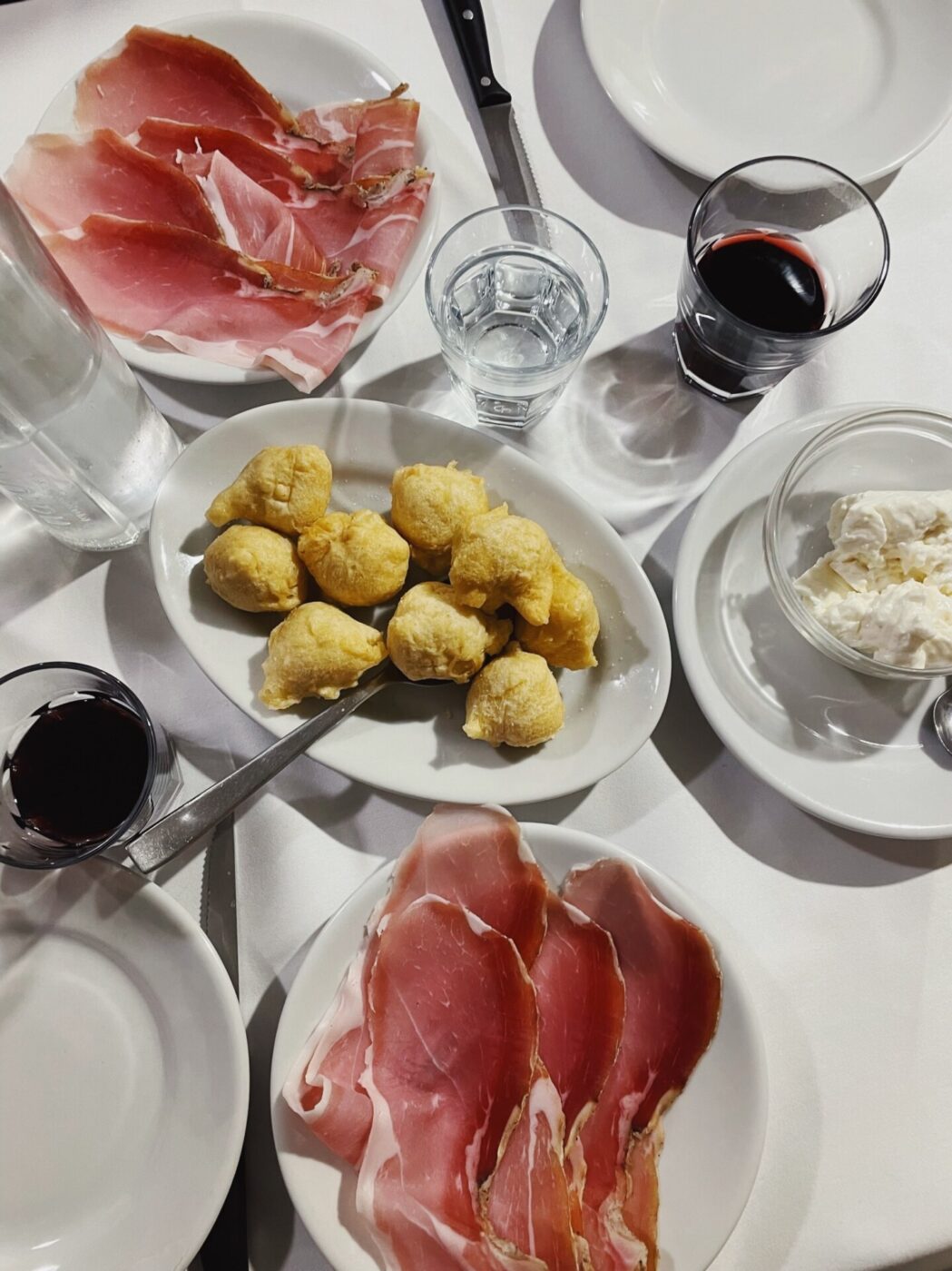By the end of this piece, I can predict that you’ll be frantically googling to find the nearest place that serves the catnip that, in Florence, is called coccoli. The name literally translates to “cuddles”–fitting, considering these comforting balls of fried dough can snuggle their way into everyone’s hearts. Before you ask what is so special about this fried dough–or what makes them unique compared to Italy’s overwhelming plethora of fritti–hear me out. There’s something about this Florentine salty, hot, greasy, crunchy, fluffy puff that’s incredibly flavorful, texturally perfect, and just all-around comforting (plus, it’s lifesaving when you’ve *ahem* had a little too much to drink).
Coccoli originated, and have pretty much stayed put, in Florence. This is in part because so many regions of Italy have their own versions of the godsend that is fried bread. Head a bit north to Emilia Romagna and you’ll find gnocchi fritti–also called crescentine in Bologna; a hollow fried bread made with lard–or go all the way down to Sicily for sfinci or zeppole–a leavened fried dough that can be made either sweet or savory.
What makes these (and the aforementioned other fried dough variations) so exceptional is not what they are fundamentally, but what you can do with them. Grab a piping hot ball, tear it open, hold it in one hand, and reach for toppings with the other, grease threatening to drip down your fingers, arms, chin. Each bite is a choose-your-own adventure, a fun interactive activity and a rare moment in Italy when galateo gets thrown out the door and it’s perfectly okay to eat with one’s hands. Across Italy, there is one consistent theme: fried dough just works perfectly with cheese and ham. In Emilia Romagna, it’s mortadella and squacquerone; in Sicily, it’s ricotta and often prosciutto crudo. In Florence, there is no debate as to what the pairings are: rip open un coccolo, spread some stracchino cheese, and hug the bite with prosciutto crudo. Perfection. Creamy, mild stracchino is more commonly associated with the regions of Piedmont, Liguria, and Veneto (and originally comes from Lombardy), where cows coming down from the mountains in autumn produce “tired milk” that makes for a less acidic cheese. In Florence, you don’t find the fresh cow’s milk cheese too often; it’s reserved for this divine pairing, and, much in the same way that the Tuscans borrowed from their regional neighbors, you can guarantee that your neighboring table at aperitivo will inevitably order a plate of coccoli after seeing you tear into them.

Coccoli at Fattoria di Maiano
As with all of these fried products, coccoli were invented to use up leftover bread or pizza dough. Tuscany has a long tradition of transforming leftover ingredients, especially bread products–think ribollita, panzanella, pappa al pomodoro–and there’s no way to make something old taste better than by frying it. Historically, friggitorie (fried food stores) across Florence began selling the dough balls, fried just long enough to be crispy on the outside and still gooey on the inside–the optimal street food and ridiculously cheap. Thank goodness Florentines are in their right minds enough to use leftover pizza dough, not that of their cardboard-esque saltless bread, so coccoli are perfectly salty. They’re a great way to reduce waste, and the smell of the salty dough frying has a 100% success rate of luring people into a restaurant. These cucina povera orbs are now a mainstay on many restaurant menus as antipasti or, in my humble opinion, the best aperitivo snack.
This got me to thinking: what is it that makes a perfect coccolo? Size, of course, matters; you don’t want the balls to be too big nor too small. The ratio of crunchy outside to soft inside is of utmost importance. The prosciutto needs to be lean to offset the grease. The stracchino needs to be light and almost whipped in texture so that it’s easy to spread and partially melts into the dough. It’s also about temperature: the coccoli have to be piping hot. No one wants to coccolare something cold, damp, or soggy. It takes a decent amount of skill to perfectly balance the stracchino and prosciutto with each bite of coccolo, something I’m sure you’ll be glad to practice. And you know what? I think that is one of the things that sets coccoli apart from its counterparts in other Italian regions. It’s all about proportion. Much like Michelangelo’s David, it’s about the divine ratio rather than the quantity.
Our Favorite Places For Coccoli In Florence
Enoteca alla Sosta dei Papi – Undeniably the best coccoli in Florence. The tiny wine bar in Sant’Ambrogio neighborhood has the softest, saltiest, fluffiest, yet crunchiest coccoli in town. They pair perfectly with a spritz (we recommend passing on the wine) and are a lifesaver before the rest of your night out.
I’Brindellone – Across the river in the San Frediano neighborhood, this no-frills trattoria has some of the best cucina povera in the city, which includes the coccoli. Here, they are large orbs, rightly taking center stage on the plate: only five per portion are necessary.
Trattoria Palle d’Oro – In the center of Florence, the antipasti of coccoli at this Tuscan trattoria is weighted in favor of the prosciutto with smaller, lighter golden balls.
Lo Spaccio at Fattoria di Maiano – The restaurant at this 300-hectare farm just below Fiesole is best in the summertime, when you can sit outdoors and feast on their substantial, chewy coccoli with delicate local prosciutto and stracchino.







